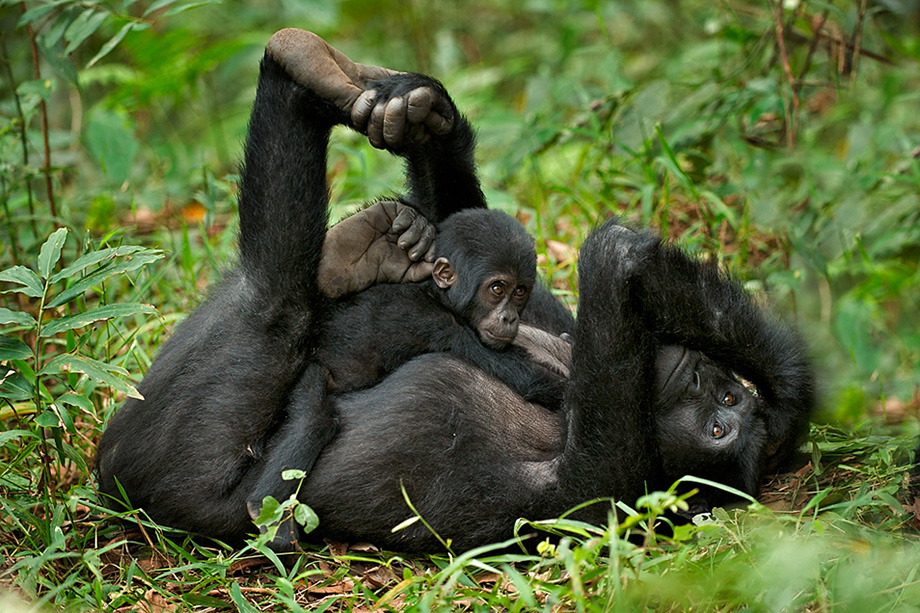Birth And Care of Young Gorillas
Birth And Care of Young Gorillas, Female gorillas have a gestation period of eight and a half months before giving birth. The gestation period is somewhat comparable to that of humans, which is nine months.
Female gorillas possess substantial abdominal girth, making it challenging to ascertain their pregnancy status. Some females may experience temporary swelling of the knuckles during pregnancy. Consequently, gorillas possess substantial, rounded abdomens that complicate the identification of pregnancy in females.
- Gorillas predominantly give birth at night, with infants being born year-round.
- Female gorillas typically give birth every four years.
- Female gorillas predominantly give birth to a single infant, with twins being an infrequent occurrence.
Birth And Care of Young Gorillas

The mortality rate for newborns is 40%, indicating that an adult mother typically produces one surviving baby every six to eight years. Consequently, numerous females will produce merely two to six kids throughout their lifetime.
Newborns typically weigh approximately 2 kg (4.5 lb) and possess pale grey-pink skin that is minimally covered with hair. Juvenile gorillas possess the ability to ascend to their mothers when traversing from one location to another.
Infant gorillas possess a remarkably strong grip in both their hands and feet, facilitating their climbing abilities. Mothers first aid infants with grasping their fronts. Gorillas of identical age engage in play with one another. They engage in wrestling, tumbling, tree climbing, and even create a chain to traverse the forest in unison.
Infant gorillas maintain continuous touch with their mothers for the initial six months and breastfeed for around 2.5 to 3 years, resulting in a robust maternal-offspring relationship. The dominating silverback and other adult gorillas in the group consistently exhibit patience and gentleness towards the baby gorillas.
In contrast, infant gorillas grow and develop significantly faster than human infants, as seen by their ability to play, smile, and bounce at 8 weeks of age.
They commence crawling at approximately 9 weeks of age. Exploration of the environment and manipulation of objects commence at approximately 3 months of age. At 20 weeks, they can stand, and by 34 weeks, they typically walk and traverse small distances from their moms. At approximately 6 to 7 months of age, newborns may ascend onto their mothers’ backs and be carried.
Infant gorillas commence consuming plants at approximately two and a half months and predominantly incorporate it into their diet by six to seven months. Male and female gorillas have considerable morphological similarity during their juvenile (3-6 years) and adolescent (6-8 years) stages.
